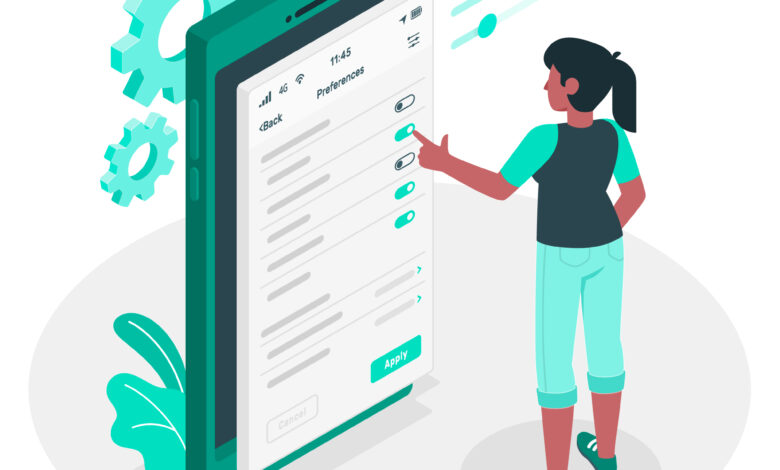Guide Single Page Apps and Role in Modern Web Development

Introduction
Single Page Apps (SPAs) have revolutionized the way we interact with web applications. By offering a more interactive and faster user experience, SPAs have become a preferred choice for many developers. This guide provides an in-depth look at SPAs, their architecture, benefits, potential drawbacks, and best practices for implementation.
Understanding Single Page Apps
Single Page Apps (SPAs) are web applications that load a single HTML page and dynamically update content as the user interacts with the app. Unlike traditional multi-page applications that require loading new pages from the server, SPAs handle navigation and content updates within the same page. This approach minimizes load times and creates a more fluid user experience.
Core Components of SPAs
- JavaScript Frameworks JavaScript frameworks like Angular, React, and Vue.js are at the heart of SPAs. These frameworks provide the tools necessary to build and manage the dynamic content and interactions of SPAs.
- Routing SPAs use client-side routing to manage navigation. Libraries like React Router and Vue Router enable developers to define routes and handle navigation within the application without reloading the page.
- State Management Effective state management is crucial for SPAs to maintain a consistent application state. Tools like Redux, MobX, and Vuex help manage state across different components, ensuring that the application behaves predictably.
- APIs SPAs often rely on APIs to fetch data from servers. RESTful APIs and GraphQL are commonly used to provide the necessary data for updating the application’s content dynamically.
Advantages of Single Page Apps
- Fast and Responsive SPAs offer faster load times and smoother interactions by minimizing full-page reloads. This leads to a more responsive user experience, which is critical for user engagement and retention.
- Simplified Development The use of modern JavaScript frameworks simplifies the development process. Components can be reused across the application, reducing code duplication and making the codebase more maintainable.
- Consistent User Experience SPAs provide a consistent user experience by keeping the user on a single page and dynamically updating content. This consistency enhances usability and reduces cognitive load on users.
- Enhanced Performance By reducing the number of server requests and leveraging client-side caching, SPAs can significantly improve performance. This is particularly beneficial for applications that require real-time updates.
- Mobile-Friendly SPAs are well-suited for mobile applications due to their responsive nature. They can adapt to different screen sizes and provide a native app-like experience on mobile devices.
Visit:- usafulnews
Potential Drawbacks of Single Page Apps
- SEO Limitations SPAs can face challenges with SEO because search engines may have difficulty indexing dynamically loaded content. Techniques like server-side rendering (SSR) and pre-rendering can help mitigate these issues, but they add complexity to the development process.
- Initial Load Time The initial load time of SPAs can be longer because the entire application, including JavaScript files, must be loaded upfront. This can be mitigated by using techniques like code splitting and lazy loading.
- Browser Compatibility SPAs rely heavily on JavaScript, which can lead to compatibility issues with older browsers or users with JavaScript disabled. Ensuring compatibility across different browsers requires additional effort and testing.
- Security Concerns SPAs can be more susceptible to certain security vulnerabilities, such as cross-site scripting (XSS) attacks. Implementing robust security measures, including input validation and content security policies, is essential to protect the application.
- Complex State Management Managing state in SPAs can be complex, especially in larger applications. Proper state management strategies are required to ensure that the application remains stable and predictable.
Best Practices for Developing SPAs
- Optimize Initial Load Time Use techniques like code splitting and lazy loading to optimize the initial load time of the application. This ensures that users do not experience delays when first accessing the app.
- Implement Server-Side Rendering To address SEO challenges, consider implementing server-side rendering (SSR) or static site generation (SSG). These techniques allow search engines to index the content more effectively.
- Use Effective State Management Choose a state management solution that fits the needs of your application. Tools like Redux, Vuex, and MobX can help manage complex state and ensure a consistent user experience.
- Enhance Security Implement security best practices, including input validation, content security policies, and regular security audits. Protecting your application from common vulnerabilities is crucial.
- Test Across Browsers Ensure your SPA is compatible with a wide range of browsers and devices. Regularly test the application to identify and address compatibility issues.
Conclusion
Single Page Application have transformed the landscape of web development by providing faster, more responsive, and interactive user experiences. While they offer numerous advantages, including improved performance and simplified development, they also come with challenges such as SEO limitations and complex state management. By understanding these aspects and following best practices, developers can harness the full potential of SPAs to create modern, engaging, and efficient web applications. As technology continues to evolve, SPAs are likely to play an increasingly important role in shaping the future of web development.



